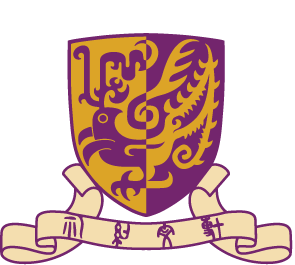
 | 84th Congregation (2017)Professor Arieh WARSHELDoctor of Science |
Professor Arieh Warshel is an Israeli-American scientist who, along with Professor Michael Levitt and Professor Martin Karplus, was awarded the Nobel Prize for Chemistry in 2013 for ‘the development of multiscale models for complex chemical systems’. We will return to that rather opaque description in a moment or two since it requires some explanation, at least to those of us who are not familiar with the fields of computational chemistry and computational enzymology – to the development of which Warshel made foundational contributions in a scientific career spanning more than five decades.
Warshel was born in 1940 in Kibbutz Sde Nahum in the north of what was then pre-independence Israel. By his own account, his childhood in the kibbutz provided a ‘relatively happy environment’. In the kibbutz children spent most of the time together, and children from the same class slept together in the ‘kids house’, spending relatively little time – around two hours per day – with their parents, the idea being that the time children and parents spent together would be ‘quality time’. Although some have been critical of this kind of arrangement, Warshel ‘actually found it to be a very reasonable as well as enjoyable way of growing up in a kibbutz’.
In 1958 he began his military service, and since he had not followed a schooling program that would prepare him for university entrance examinations, he undertook these studies in the field during his service in an infantry division, and later during night breaks, while serving in the headquarters of the Chief of Staff of the Israel Defense Forces. Taking the examination in an external way (and not getting the proper hints), led grades that were below those required to be accepted to The Hebrew University of Jerusalem, but was successful in taking what he has described as ‘the dreaded entrance examination’ of the Israel Institute of Technology (Technion). After a successful undergraduate career at Technion, Warshel pursued graduate study at the Weizmann Institute of Science under the (originally reluctant) supervision of its Scientific Director Shneior Lifson. He began his studies there in 1966, initially as an Master of Science candidate, transferring after less than a year to PhD studies. This rather meteoric progress was interrupted, however, by the outbreak in 1967 of the Six-Day War between Israel and its Arab neighbors (Egypt, Jordan and Syria), during which Warshel served as a tank battalion communications officer.
Despite this interruption he completed his PhD in two years (1967 – 1969) where he and a young pre-doctoral student, Michael Levitt developed a computer program that was basis for many subsequent simulation works. In the next step, he took up a post-doctoral position with Martin Karplus at Harvard University, refining the work that started in the Weizmann institute and adding to quantum features. He returned to Israel and the Weizmann Institute in 1972, just in time to undertake further military service for his country in the Yom Kippur War in 1973. By this time, Michael Levitt, had completed his PhD at the UK Medical Research Council (MRC) and returned to the Weizmann.
In his turn, Warshel moved to the UK (again, the MRC) working again with Levitt until 1976. The work done with Levitt and Karplus led ultimately to the Nobel Prize.
Warshel moved in 1976 to the University of Southern California where he remains today as Distinguished Professor of Chemistry and Biology, and holds the Dana and David Dornsife Chair in Chemistry.
Some scientific discoveries or breakthroughs are relatively easy for us all to understand. Their significance and impact beyond the laboratory or the seminar room can be readily appreciated, especially when the link between theoretical exploration and practical application is relatively short. Others, such as the work of Warshel, need a little more explanation, at least for the lay audience.
Professor Warshel’s work is profoundly interdisciplinary, embracing and combining the fields of chemistry, biology and computer science, and it has been central to the development of the systems and methodologies that underlie modern computer simulations of biomolecular processes. In his own words, his research ‘involves the introduction and utilization of computer models for simulating the function of biological systems, as well as advancing the current understanding of how such systems work’. Or, in the words of the Royal Swedish Academy of Sciences when announcing the award of the Nobel Prize in Chemistry to Warshel and his colleagues:
‘Chemists used to create models of molecules using plastic balls and sticks. Today the modelling is carried out in computers. In the 1970s, Martin Karplus, Michael Levitt, and Arieh Warshel laid the foundation for the powerful programs that are used to understand and predict chemical processes. Computer models mirroring real life have become crucial for most advances made in chemistry today.’
The methods developed by Professor Warshel and his colleagues allow for the precise description and prediction of how actual events in nature occur.
One of Warshel’s earlier contributions, in this regard, was the decoding of the precise molecular dynamics that occur during the process of vision. In 1976, Warshel presented computer simulations of the process which predicted correctly what happens in the first picosecond (that is one millionth of a millionth of a second) after light strikes the human eye. This prediction was subsequently confirmed experimentally and provides an illustration of the predictive power of microscopic simulations. (This achievement subsequently featured on an Israeli postage stamp during the United Nations Year of Light in 2015.)
The academic world, for all its commitment to vision, to challenging accepted ideas and testing the boundaries of knowledge and understanding can be a rather conservative, or at least cautious world. Professor Warshel has testified directly to this: ‘The gradual acceptance of my work has not been a simple ride … The referee reports were almost always very hostile and my fight with referees became legendary and some people assumed that I actually enjoyed these fights.’ There will be many in this hall who will empathize strongly with these comments. But very few of us will have had the pleasure of confounding the referees so decisively as Professor Warshel.
For all his distinction, Professor Warshel is a modest man, happily acknowledging the contributions of his colleagues – especially those who shared the Nobel Prize – his students and his postdoctoral associates. And he is a man for whom family, too, means a great deal – acknowledging in his Biographical Note at the time of his Nobel Prize the contribution of his wife, Tamar, through her support for him in his scientific and personal life.
Arieh Warshel has been the recipient of many awards and distinctions in addition to the Nobel Prize. He is an Honorary Doctor of the Faculty of Science and Technology of Uppsala University; an Honorary Doctor of the Israel Institute of Technology; an Honorary Fellow of the Royal Society of Chemistry; a Fellow of the American Association for the Advancement of Science; Elected Member of the National Academy of Sciences of the United States of America, and a recipient of the Gold Medal of the Israel Chemical Society, to name just a few.
Today, The Chinese University of Hong Kong counts itself among the bodies and institutions that have recognized his outstanding contribution to Chemistry. It is especially fitting to do so since Professor Warshel has recently become the Honorary Director of the Arieh Warshel Institute for Computational Biology at The Chinese University of Hong Kong (Shenzhen).
In recognition of his outstanding contribution to chemistry, it gives me great pleasure, Mr Chairman, to present to you Professor Arieh Warshel, for the award of the degree of Doctor of Science, Honoris Causa.




